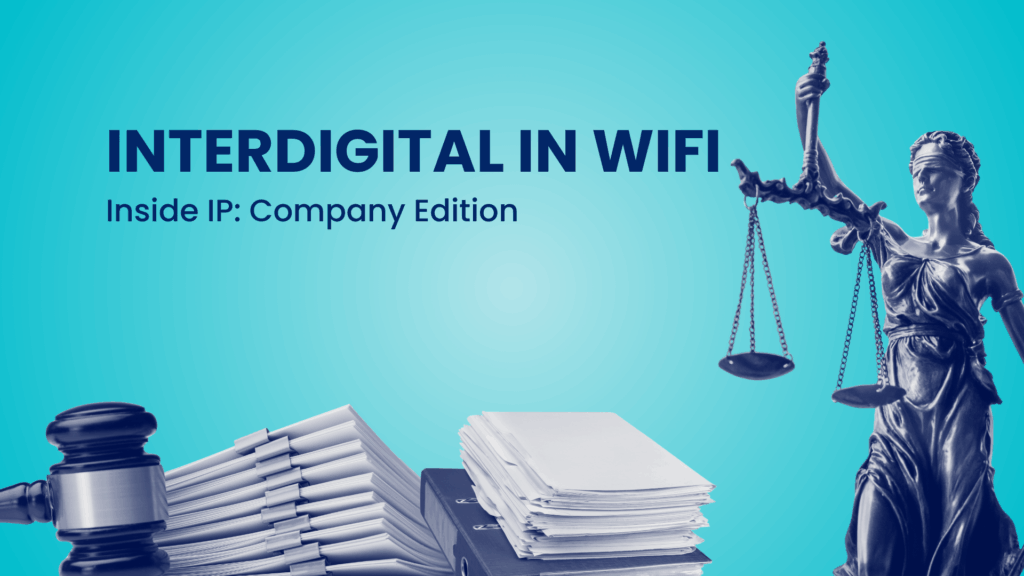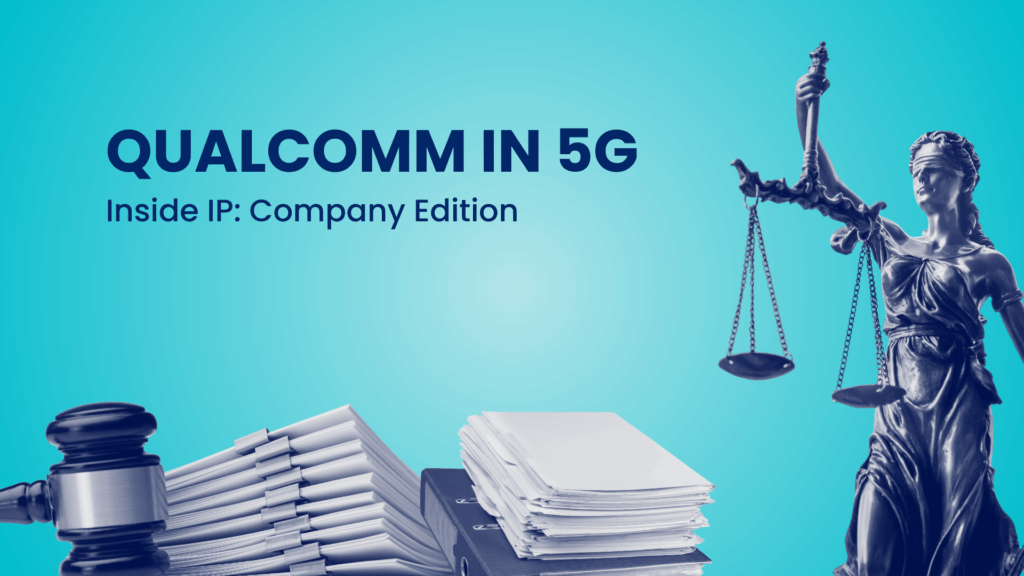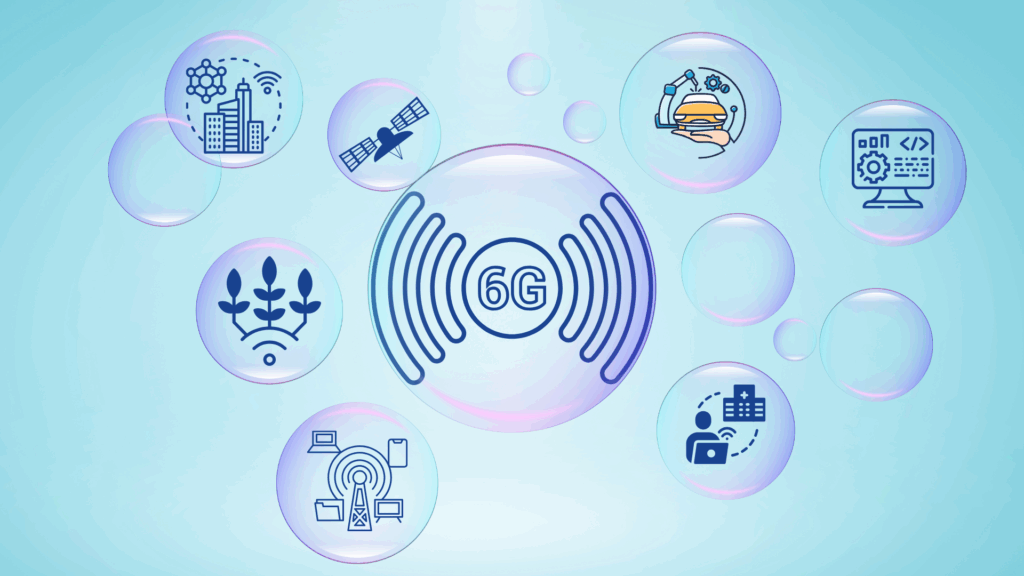5G – Is it truly disruptive or just a few Mbps faster than the current network? After a while of bringing life to an idea that existed only in theory years ago, 5G is finally here! The advent of ubiquitous 5G, an evolution of wireless 4G LTE, has left the entire telecom world abuzz about the revolution ahead of us.
According to sources, by the end of 2023, this revolution in the telecommunication industry will be deployed on a societal and commercial basis. GSMA estimates the U.S. alone will have 100 million 5G connections by 2023 and 190 million by 2025.
5G technology will be defined by the seamlessly connected society with advancements in artificial intelligence, autonomous IoT (Internet of Things), Massive Machine-Type Communication, big data analytics, and augmented/virtual reality backed with high speeds, secure connectivity, and a host of other factors, listed below:
Reliability: With 5G, high-speed data transmission will not just depend on location, whether it’s in basements or coffee shops. Consumers will be able to enjoy super-high speeds with reliability and consistency, even in indoor or crowded areas.
Bandwidth: Imagine sensors on almost everything! A vast number of connected devices will be the base feature of this future network. Ericsson has forecasted 1 billion 5G subscriptions by the end of 2023.
Latency: The annoying lag our smartphones experience when the network takes too long to respond. We just sit there after requesting a website to open or play the video we clicked on. God knows how bad these operators had been cursed. But with 5G, it’ll be reduced to 1 millisecond. That is 400 times faster than the blink of the eye. It would be so rapid that some companies are viewing it as the onset of a new future, with endless possibilities, including remote surgery.

This article offers a brief overview of 5G technology’s capabilities, its applications in various niches, including healthcare and the automotive industry, and what to expect from it in the future.
5G Infrastructure
The disruption of 5G is expected to bring massive waves to telecom surfing. The anticipated capabilities of 5G will provide widespread access to an extensive range of applications and services. Eliminating the subsequent concerns will have increased resilience, continuity, and much higher resource efficiency, all this with a significant decrease in energy consumption.
Typically, for deploying services like 3D TelePresence in mobile devices, data rates in the order of 10 GB/s as the crests are required. 5G will efficiently deliver the outputs here with improved capacity and boosted user data rates. In addition, the security and privacy of data will be strengthened by the 5G services. On a particular level, for a concert with 25,000 devices relaying Justin Bieber’s “baby” in social networks at 50 MB/s, a capacity of 10 TB/s/km² will be required. Also, reduced end-to-end latencies of the order of 5ms are needed to support interactive applications and ensure ultra-responsive mobile cloud-services.
The infrastructure of 5G is expected to target 30-50 MB/s for a single transmission, before channel coding, in the near future. For adaption of the data stream with “zero latency”, most of the light-field and sound-field processing will be performed in the network. The download speeds are expected to increase tenfold as compared to 4G and if we dare to put the true 5G standards in light, it’ll get close to a hundred-fold. Easing it out for you, if the HD movie you like takes 6 minutes to download in 4G, it will become a matter of seconds with the fifth generation.
Apart from the human-centric benefits you just read, 5G is going to create room for advancements in the Internet of Things (IoT), Massive Machine-Type Communication (M-MTC), and Ultra-Reliable Machine-Type communication (U-MTC) by the end of 2020. 5G, in order to fulfill the upcoming needs of IoT verticals, might need to restructure the key architecture of the mobile systems.
5G Advantages
Increased data volume: Without any performance impact, a transaction involving massive devices and people, sending/receiving large files across a wireless connection, must be done smoothly and quickly. With 5G, it is expected to increase by 1000 times the current volume.
Low latency: Transit time will be reduced to one-fifth. The low-latency requirement of as little as 1 ms (in a few cases) of end-to-end round trips is intended to enable real-time control applications to run across the 5G network. A few have identified a round trip of 5ms as a goal.
Faster data transfer speed: Every new generation of wireless networks has been characterized by improved bandwidth. The goal of 5G is to support 1-10 Gbps connections to endpoints in the field and 10-100 times higher speeds are estimated.
More devices: 10-100 times more connected devices. 5G intends to increase the number of supported devices in a given area by 10 to 100 times, thereby enabling IoT.
Energy efficiency: Battery lives will be extended by a factor of 10. 5G aims at reducing the core network consumption by 90%
High availability: The aspirational goal of 5G is to create the perception of five-nines availability, achieved through distributed loads and redundancy.
100% coverage: The ability to provide good coverage in all areas is another aspirational goal of 5G. This is also aimed at areas not falling under the preset ideal conditions.
Rapid service deployment: One goal is to meet all the challenges research teams face. Another way to reduce the time it takes to deploy 5G network connections is by using self-organizing network technology.
Truth be told, 5G still is stuck with a few unbeatable challenges (which we will discuss later in this article) that are yet to be surpassed in the current technology and infrastructure. The in-demand superpowers of 5G, therefore, need huge research efforts invested by academia and industry.
5G Application Areas
The potential of 5G will provide benefits to the three application areas:
- Enhanced Mobile Broadband (eMBB)
- Massive Machine Type Communication (mMTC)
- Ultra-Reliable and Low Latency Communications (URLLC)
These major areas are further divided into sub-areas such as healthcare, consumer electronics, smart home, retail, VR, wearable devices, automotive, smart city, etc.

Healthcare
Ericsson recently, in one of its reports, predicted USD 76 billion as the revenue opportunity in 2026 for companies working on healthcare transformation with 5G. 5 G will open its doors to many healthcare models like value-based care, which will be brought to existence using 5G’s reliable connections: Massive MIMO (multiple input multiple output) and signal amplitude. These two factors are vital for achieving IoT devices’ desired data speed and capacity demands.
5G will introduce the world of health to a new face of the medical industry with advanced devices and upgrade the healthcare experience with these three elements:
IoMT – Massive Internet of Medical Things
A collection of medical devices and applications connected to healthcare IT systems through online computer networks is called the IoMT (Internet of Medical Things). Widespread implementation of IoMT will be vital to doctors as these instruments can be relied upon for instantaneous capturing, collecting, and transferring medical data from patients through various electronic means.
Deploying this will make it easier to determine physical activity and other vital health signs. Not just this, a check on prescriptions being taken on time or not can also be made using this. The global annual income of IoT in healthcare is estimated to cross $27 billion by 2025 (Goldman Sachs, 2017).
Enhanced Mobile Broadband (eMBB)
Say goodbye to the tiring trip to your doctor. With this advancement in the medical industry, the doctor will come to visit you now. For those who hate making time out of their busy schedules to visit their doctors, there’s a big relief. 5G will use high connectivity and substantially enhanced data rates, allowing a doctor to simultaneously study and analyze medical data from more than one patient. The doctors will be the ones bidding high for specific patients now.
Still confused about the application process? It will be done through 3D/UHD video telepresence. Similarly, 5G can help offer medical students training, especially in physiology and stroke diagnosis.
Data exchange or mission-critical services
5G can enter the zone of authorizing the devices, network communication, and protection of crucial messages. The 5G New Radio unified air interface is tailored to deliver deep and redundant coverage to connect medical sensors across some network nodes.
Why is it needed? It boosts reliability. For example, only one out of 100 million packets would get lost, or in simpler words, latency would get reduced to as low as one millisecond. Transmissions of critical issues, such as medical emergencies, will be prioritized over other broadcasts. By allowing doctors to provide medical help remotely, 5G mission-critical healthcare services will be able to save thousands of lives.
Consumer Electronics
With communicating home appliances, super-fast connection speed, self-driving cars, and Virtual reality stealing the thunder, the future of consumer electronics will ease almost every move an individual can think of making.
Integrated networks, with the help of wireless technology, have become a reality. A few changes in the core of telecommunications and data networking have changed how we see the world. What shouldn’t catch you in shock is knowing that 40% of the world’s population has internet access today, a huge leap from 1% in 1995. With the wireless trend, people can connect with each other, even in remote or rural areas.
At CES (Consumer Electronics Show), ZTE’s CEO told Bloomberg News that the company’s 5G-enabled smartphones will be ready to sell in the U.S. by the end of 2018 or early 2019.
Home Automation
What do you think your home wearing the crown of 5G will look like? According to Intel, with 5G, almost everything you see around you will be connected.
“We’re not just going to be connecting 6 or 7 billion people; we’ll be connecting tens of billions of things,” said Asha Keddy (who heads Intel’s IoT project). “It will be phones, lights, cars, buildings, appliances, you name it.”
Home should be the place to begin with. We have seen app-controlled door locks, smart cameras, and internet-connected fridges in Las Vegas Convention Center halls. Experts have realized that, with the deployment of 5G, the number and types of connected devices are going to increase way beyond expectations. Gartner predicts 20.4 billion connected “things” will be online by 2020.
Just imagine everything working on its own. Smart lights communicate with the electricity grid, and showers with a sensor to monitor water usage. Imagine connected cameras scattered throughout your home. Life will be good with 5G.
Retail
5G network standards will potentially drive game-changing advancements to customer shopping journeys by harnessing the potential of Virtual reality, AI Learning, and wearable technologies.
Enhanced Virtual Reality
5G’s ultra-fast speeds will offer smoother and less annoying VR experiences as buffering and lags in features and content will be eliminated. No need to spend hours figuring out what purchase to make at the store. VR will have it covered for you; just sit on your couch and use the virtual store to browse, save, purchase, and receive notifications on products you are interested in. Can’t wait to shop with 5G!
5G has also proposed extensively improving the quality of VR content. Japanese telecommunications firm NTT DoCoMo successfully trialed live streaming an 8K video at 48 Gbps with Nokia. Retailers that use VR to showcase their products in a virtual store will benefit from this, as consumers will be able to view displayed items more clearly.
Improved AI learning Capabilities
Retailers today are armed with AI tools such as chatbots and virtual personal assistants that uplift their services and generate huge revenues for them. 5G will help them take a leap forward in the same direction. Now, buyers will be able to connect, receive, and download information (obtained online, for example, nearest store location) from the store’s AI assistants at amazingly high speeds.
As more people will start using their tools, retailers will also benefit from the data and preferences the system would collect. The results generated by the assistant will gradually improve and accurate insights, with personalized filters, will be recommended in the future.
Greater Wearable Device Capabilities
Wearables will automatically connect with stores that utilize beacon technology allowing consumers to receive push notifications with personalized deals, which will boost sales and make store visits more tailored to their needs.
In addition, with the development of indoor navigation apps that utilize computer vision technology to precisely track users’ movements, super-fast download speeds will mean shoppers will also be able to use their wearables to navigate across large stores or malls.
Industrial Automation
Most analysts agree that smart manufacturing is likely to represent the biggest portion of market revenues for the Internet of Things (IoT) in the near future. Smart manufacturing is dependent on industrial automation, which relies heavily on the use of robots and machine intelligence. The factory of the future will be realized through the digitization of the manufacturing process and plants, which will be enabled by 5G networks and all their building blocks.
5G in collaboration with industrial automation will enhance the interactions between humans and robots, robots and robots, and even between machines. High reliability and low latency in 5G will bring the transformation in the manufacturing industry from mass production to mass customization through digitized factory operations.
Intelligent Buildings and Infrastructure
Honestly, buildings that aren’t “Smart”, as in “internally connected”, are the buildings that existed decades ago. Agree? They used to serve our basic necessities: shelter, temperature control, and safety being efficiently for years. But buildings we have today, or older structures that have now been converted to smart buildings, are constantly changing. They have become living organisms, connected to the network of smart and adaptable software.
If you are wondering what intelligent buildings actually are, here’s a brief definition.
An intelligent building is a structure that utilizes automated processes extensively to manage and operate efficiently.
Everything, from heating, ventilation, air conditioning, lighting, security, and other systems, is taken care of without human help in a smart building. Such buildings use sensors, actuators, and microchips to collect data and necessary information that is vital for managing the building’s functions and services.
These infrastructures enable the owner, operator, and facility manager to monitor performance and identify factors that further enhance asset reliability. Furthermore, it reduces energy consumption, optimizes the use of space, and minimizes the environmental impact of buildings.
Energy & Utility
Undoubtedly, 5G is more cost-effective and energy-efficient when compared to generations of wireless technologies that existed to date. It will create its own definition of the contribution it is going to have in energy savings. Another step towards the smart city would be the next beneficiary of 5G, Smart lights that will control themselves will surely have its impact on energy.
Knowing when to dim the light and when to increase its intensity, by sensing the number of pedestrians present on the road, smart lights will not just save power but also decrease light pollution, while keeping the neighbors safe.
Smart lights have already been rolled out in cities such as San Diego and Barcelona. Through this system, San Diego is expected to save an estimated $1.9m annually with the installation of these power-saving street lights. If implemented successfully across the US, using this approach the potential savings are estimated to go beyond $1bn per year.
Smart lighting connected to a city’s broadband network can also help in monitoring the quality of the local air. Having this level of connectivity with smart LED lighting, the maintenance costs of lighting systems can also be reduced.
Finally, utilities will also support the deployment of 5G. 5G will be deployed in the form of a small cell format. It will be as small as a typical shoebox, as a complement to the traditional mobile towers. Further, to achieve the necessary density and extent of coverage, utility poles will serve as the best solution.
Automotive Industry
Talking about 5g applications, how can we not mention what we read almost every day about – Autonomous cars. 5G is an important technology if we talk about the automotive industry, as big firms are researching and investing in cars, more than ever before. This trend will continue to strengthen if we continue to move towards an autonomous driving environment. 5G will be the green flag in success for connected cars and autonomous vehicles as they will be able to almost instantaneously communicate with each other, the buildings, infrastructure around the,m and the world traveling along.
As autonomous cars will free the driver and people inside the car from checking the road, more network bandwidth will be required as passengers would have more free time to pass. Hence, demand for network bandwidth for activities like watching movies, playing games, chatting with friends, etc., will enter the picture.
Additionally, 5G can enable many more services, new apps, and functions within the car, helping the automotive industry capitalize on value-added services while simultaneously enhancing the passenger’s journey and making it more pleasurable.
Public Safety & Surveillance
The security industry will have a new array of opportunities with the deployment of 5G. Faster and more robust network security means more connected, autonomous devices and systems backed by images of higher quality and videos with faster streaming.
In the era of the Internet of Things, all surveillance equipment is expected to be interconnected, providing security firms with more data to analyze and make informed decisions. This, in turn, will lead to strategy-making through data analysis.
5G Wireless Networks – City Surveillance
Challenges involved in the deployment of fiber optic cable are well known. Whether due to budget constraints or the difficulty of excavating, especially in downtown areas, wireless being the only solution here would be welcomed. Besides, this can be installed quickly and with minimal disturbance.
Conclusion
The World Economic Forum describes 5G as the Fourth Industrial Revolution. Qualcomm claims that 5G will be bigger than electricity, and their prediction suggests that by 2035, it will be worth $13 trillion to the goods and services industry.
5G is going to generate billions of dollars through unrealized revenue streams. All the telecom giants are motivated to capitalize on the upcoming wave. Many public-private partnerships have already been established, and many more are forthcoming. We will cover all of these partnerships and M&A details in an upcoming post, the second part of our 5G series. If you’d like to be notified about the post before anyone else, subscribe to the blog today.
Next Article on the 5G Series:- 5G Market Research: What Are The Top Companies Upto?








